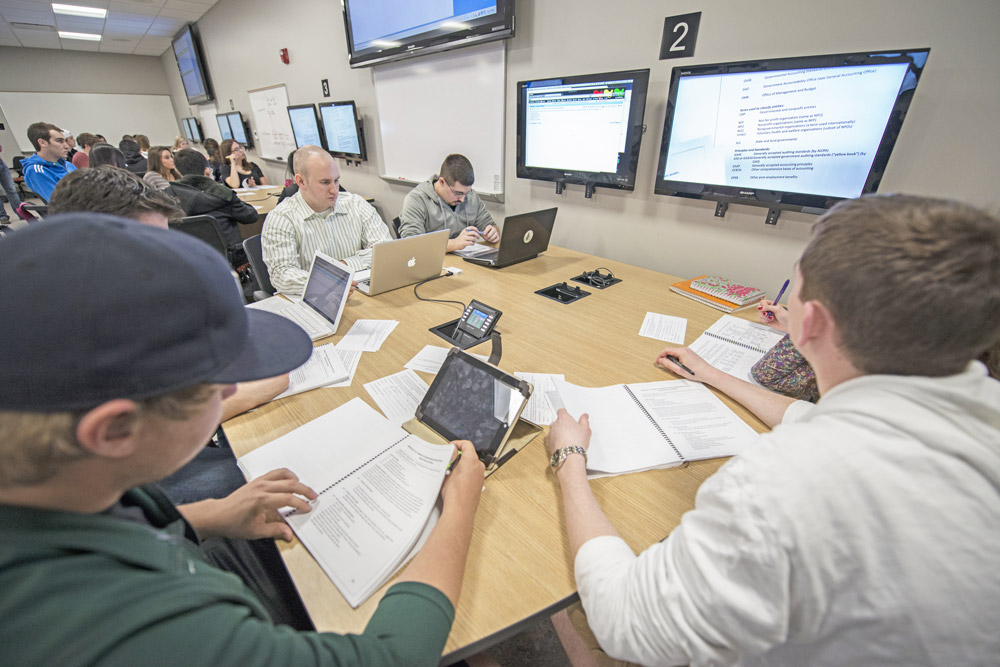Best practices and guidelines in online and blended learning continue to evolve and change based on new research and what other higher education institutions are learning and doing.
Understanding why you are developing or updating an online or blended course will help you understand how technology may support your teaching goals.
Getting Started
Read information and checklists about things to consider before creating an online or blended course. Department administrators and faculty have different roles in planning courses at MSU.
Administrators: Determine Course Funding & Support Models
Often departments will have someone within their colleges or units help support course promotion and funding endeavors. There are different types of course support models based on your goals.
When you get to a certain size of classes, it helps to have someone in your unit oversee all courses and provide some level of support to your faculty and instructors. Investing in these sorts of support positions can help with the administration and management to help move course innovations forward.
Here are some course support models from MSU departments:
- The Department of Geography hired a full-time coordinator to maintain and updates courses and handle administrative functions. Courses are taught by teaching assistants.
- The Department of Psychology trained a faculty member to act as a mentor for others.
- The Department of Sociology hired a student to learn the tools provide technical support to faculty.
- Food Safety and Toxicology uses a half-time coordinator to organize the program, handle course promotion and scheduling. The coordinator also teaches courses.
Faculty: Talk to Your Department
Before planning a course, instructors need to be aware of any departmental course requirements, expectations, and resources. Departments coordinate processes to facilitate the administration and management of a new course. Procedures for offering a new course vary according to your curriculum choice and format.
A new or permanent course chance needs approval from the University Committee. The process varies by department.
When your course is established, your department needs to:
- Identify you as the instructor of record for access to the Instructor Systems.
- Enter your data into the the Course Load, Instruction, Funding and Modeling System (CLIFMS). for your course to automatically be created in MSU D2L – Brightspace.
- Add any special notes into your course in the Schedule of Courses.
- Tell you how to collect student feedback on your course.
- Offer options and resources for course promotion.
- Detail different course funding and support models.
Read more about MSU’s Curriculum and Catalog process and resources.
Ask & Answer Planning Questions
Developing online materials requires a significant time investment in the beginning. Planning is one of the most important steps when developing a fully online or blended course.
Answering these questions will help ensure you have adequate time to learn how to use new technology systems or tools and designate time, testing, feedback, and revisions.
- What are your course goals and expectations?
- Which method(s) of teaching will help you meet those goals?
- What technology systems and tools will help you meet those goals?
- What technology skills, support, and training may be needed?
- How will your content be created, updated, and maintained?
- Do you need assistance in course design, development, or maintenance?
- How might students’ varied Internet bandwidths affect access to your course or course materials?
- Have you created content with accessibility in mind (e.g., captions, alt text for graphics)?
For instructional design consultations and support, contact MSU IT Academic Technology at (517) 432-6200 or fill out this online form.
Plan for Maintenance & Backups
Course maintenance is an ongoing process. Updating information, fixing issues, moderating discussions, and adding new content are necessary to keep a course current. Links especially should be checked each semester prior to student access.
It’s a good practice to also keep a copy of your course materials as a backup. Store this backup in a safe location separate from your computer’s hard drive and make sure to download a new copy after making any significant changes to your course. Your department may also have guidelines for course backups.


